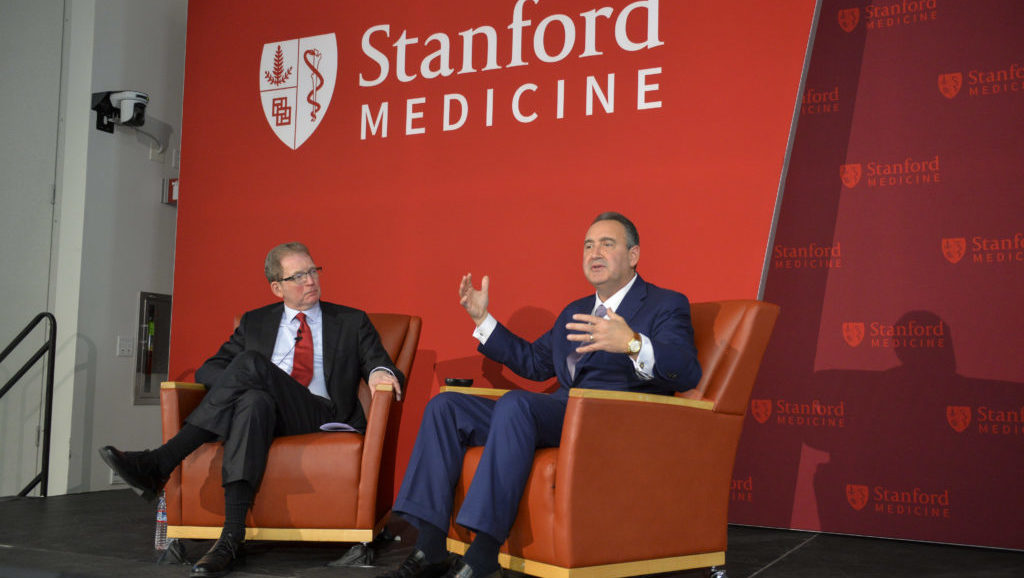Nearly all U.S. hospitals and physician practices are now wired into electronic health records.
That’s an unfathomably large – and growing – amount of data. How can doctors harness it to help them improve both health care and the health care system as a whole?
It’s a question that Dean Lloyd Minor, MD, decided to explore in the latest installment of his Dean’s Lecture Series. Last week, he welcomed Jonathan Perlin, MD, PhD, to Stanford Medicine to discuss how this cycle could work in a learning health system.
“There’s a metaphor that if we use our electronic information correctly, we actually have something that utilizes the energy to generate new energy, new understanding and learning, and accelerate the improvement of health care,” said Perlin, who is president of clinical services and chief medical officer at HCA Healthcare Inc. and former under secretary for health in the U.S. Department of Veterans Affairs.
HCA includes 179 hospitals and logs 34 million patient encounters a year, Perlin said. It generates a tsunami of information that the system has used to identify best practices and improve the speed and efficiency of diagnostics.
For example, Perlin cited a case in which intensive-care units in 43 hospitals studied the efficacy of three different approaches to reducing health care-associated bloodstream infections. Nearly 75,000 patients were enrolled, and a year and a half later, there was an answer: Infection rates were lowest when all patients, upon admittance to the ICU, were given antibiotic nose drops and an antiseptic sponge bath. When HCA put that finding into practice, ICU central line-associated blood stream infection rates dropped 42 percent, he said.
“This is really the magic of information and scale. We can really accelerate learning,” Perlin said, noting that in the past, similar studies that included fewer patients took much more time.
Computers also can help on a more individual level, he told the audience. Algorithms are much better-situated than humans to sort through 1,000 new data points generated per ICU patient per hour.
One way HCA put that into practice, Perlin said, was by programming its machines to recognize early signs of sepsis and alert health care workers on a smart device. “The computer actually allows us to move the time of sepsis identification, compared to best clinicians, back 18 hours with 50 percent greater specificity,” he explained, “meaning that the team is attending to those patients with the greatest need.”
HCA also trained an algorithm to sift through pathology reports on images to prioritize patients needing immediate attention. As a result, for people with breast, lung, and other cancers, “we’ve been able to provide patients timelier care, greater patient engagement to reduce the risk of misdiagnosis, and better outcomes, particularly for the time-sensitive conditions,” Perlin said.
Minor asked him to identify the biggest challenges to achieving a learning health system, in which physicians and patients engage with information from electronic records, and data enhance the delivery of higher-quality care. Perlin replied:
We need to have the network effect. From a practitioner’s standpoint, we need to have a little bit friendlier systems. And from a patient perspective, and a social perspective, I think we need to embark on a dialogue about how we should think of health information as a common good, and not worry quite as much about all of the aspects of privacy because we’re really missing an opportunity to make good on the investment in health care that we make as a society.
Photo, of Lloyd Minor (left) and Jonathan Perlin, by Rod Searcey




